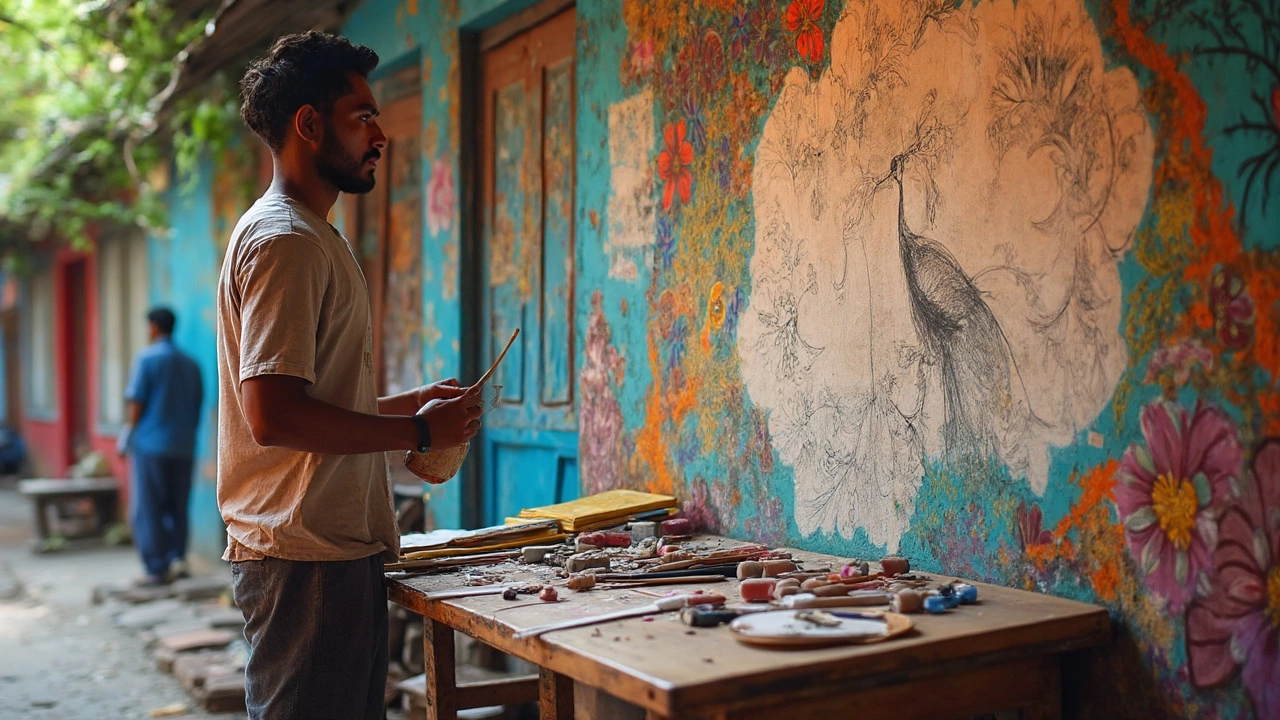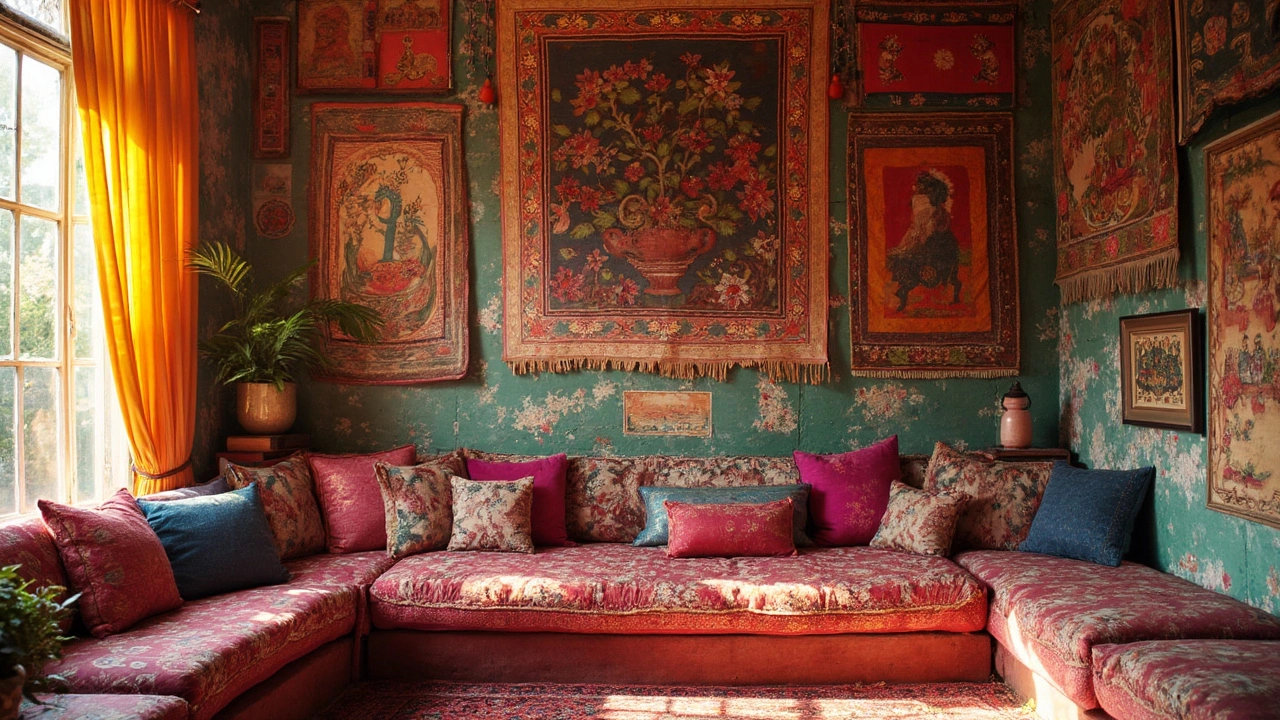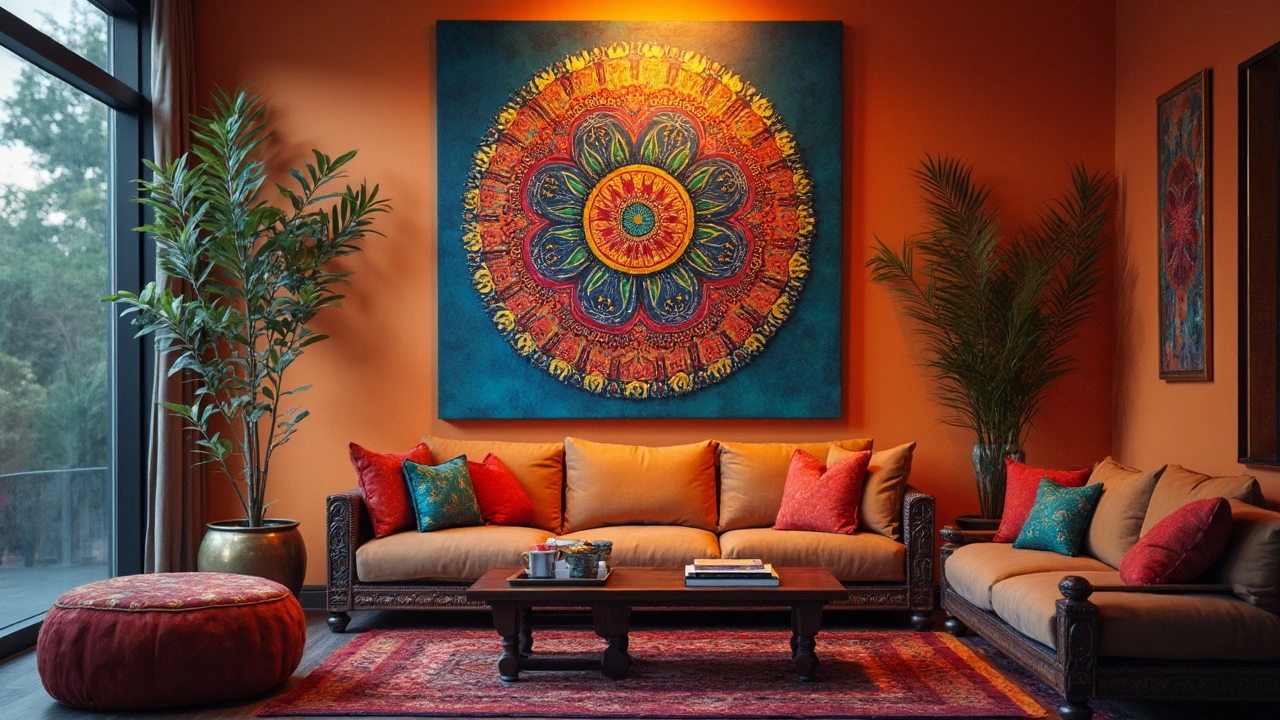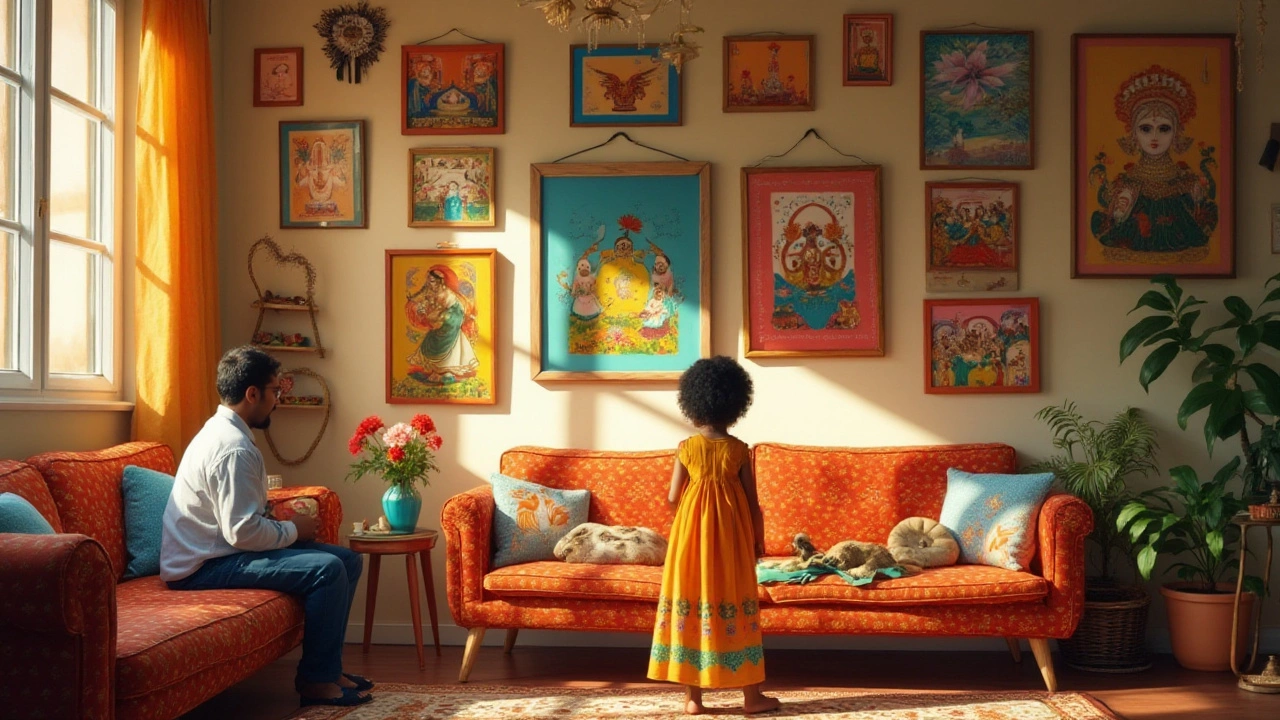Alright, so you're pumped to create some killer wall art. But before you start splashing paint everywhere, you gotta get the sketches right. Jumping straight to painting is like baking a cake without measuring the ingredients—possible, but kinda risky. So, what's the first step? Sketching the outline, of course! Imagine it as a roadmap for your masterpiece.
Most folks think sketching is all about having a steady hand, but it's more about using the right tools. You wouldn't use a spoon to hammer a nail, right? Let's start with basic options like charcoal or chalk. These are perfect for experimenting since they’re easy to erase and adjust as you find your flow.
But hold up, there's more to the story. Current tech has thrown new gadgets into the mix. Laser pointers and digital projectors can project your design directly onto the wall. It’s like wizardry for those who may not trust their freehand skills just yet. Now you can focus on creativity instead of stressing over proportion and alignment.
- Traditional Sketching Tools
- Modern Gadgets for Wall Art
- Tips for Preparing Your Wall
- Mistakes to Avoid
Traditional Sketching Tools
Starting with traditional tools is like learning to ride a bike with training wheels. They give you control and the ability to fix mistakes easily. And when it comes to *wall art*, there's no shame in sticking with the classics.
Charcoal is a crowd favorite because it’s versatile and easy to erase. You can go light for subtle lines or press harder for bold strokes. Charcoal is also great for blending, which helps you visualize shadows and depth on your mural. Plus, if you mess up, a damp cloth can wipe away your error with ease.
Then we have chalk, which might remind you of old school days. It's super forgiving and a breeze to work with. Different colors can be used for various parts of your sketch. Like charcoal, a simple wipe will erase chalk lines, but make sure you're indoors or it’s not a windy day, or you might end up with a masterpiece on your floor instead.
For those looking for something a bit sturdier, graphite pencils can be your go-to. They offer precision that’s hard to beat. Just like charcoal and chalk, pencils give you the power to adjust your lines. A thicker grade like 4B or 6B helps you sketch smoothly on walls.
Don’t overlook the humble erasers, either. A good eraser is essential, especially for *wall art* sketches. Look for kneadable erasers, as they can be molded to erase tiny spots or large areas effectively without leaving residues.
If you’re drawing on a surface with texture, consider using conté crayons. They combine the best of charcoal and pencils, giving you richness in color and firmness. They might not erase as easily, so keep that in mind if flexibility is needed in your design.
While it might seem simple, having the right traditional tools can make a huge difference. They help you lay a solid foundation and set you up for success when you finally pick up that paintbrush.
Modern Gadgets for Wall Art
You've got a vision for that wall, but let's face it, freehand sketching isn't everyone's thing. That's where modern gadgets come in, making wall art way less intimidating and a whole lot more fun.
First up is the digital projector. Think of it as your wall's best friend. You can project any image or design directly onto your wall. It's like having a giant stencil that you can adjust and resize. These projectors are easy to use: hook them up to your computer or smartphone, and bam! Your design's up on the wall. You no longer have to worry about getting the proportions just right.
If you're looking for something more portable, check out laser guides. These handy little tools help you get clean, straight lines every time. Just align the laser to your layout, and you have a perfect guide to follow. They're especially useful for geometric patterns or making sure borders and edges are spot on.
Now, let's talk about some interesting tools like the electronic sketching pen. Paired with a digital stencil app, this pen lets you trace designs with precision. It's like drawing with a regular pen but on a bigger scale. It helps in achieving the fine details without any hassle.
Here's a quick comparison of some popular gadgets:
| Gadget | Pros | Cons |
|---|---|---|
| Digital Projector | Easy to use, precise, versatile | Requires power source |
| Laser Guides | Portable, great for straight lines | Limited to linear shapes |
| Electronic Sketching Pen | Detailed, tech-savvy | Needs compatible device |
So, whether you're a tech enthusiast or just looking for an easy way to transfer your art to walls, there's a gadget for every artist level. Tech can take a lot of the stress out of creating wall art, letting you focus on what you do best—getting creative!
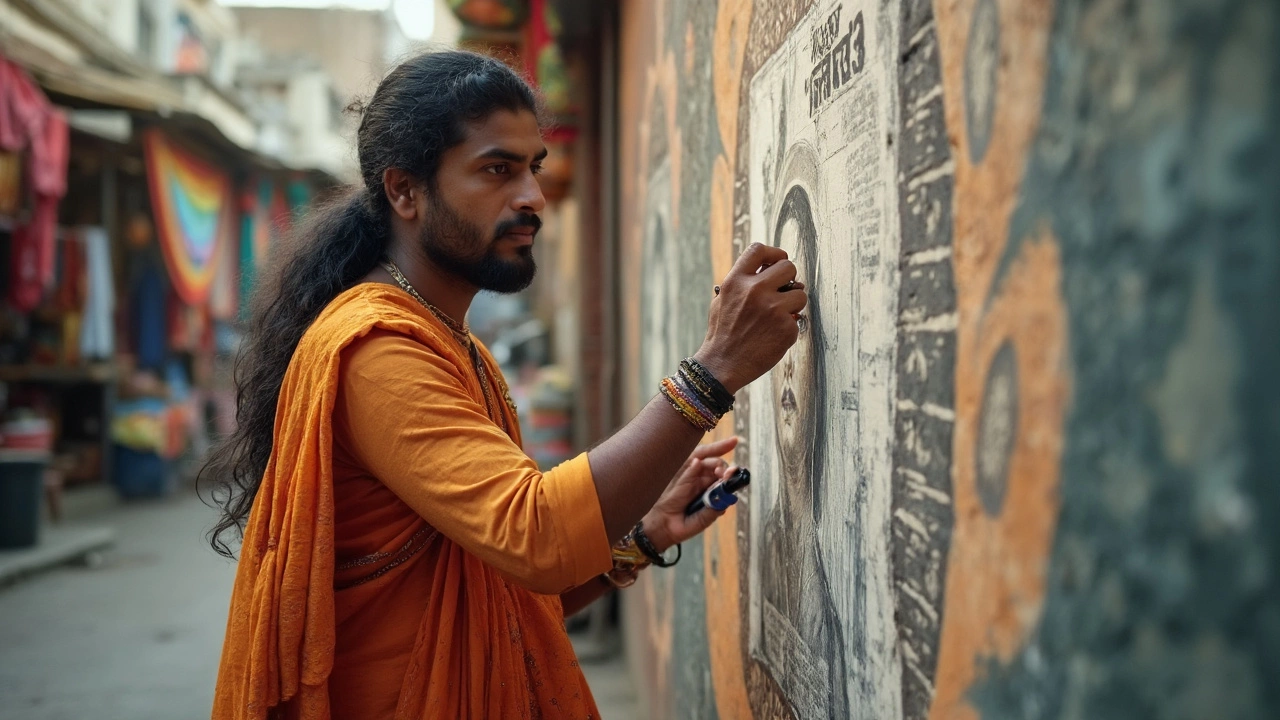
Tips for Preparing Your Wall
So you're all set to paint a stunning wall art, but before you get those bursts of creativity rolling, let's talk prep. Dive into prep work, and future-you will thank you. And no, it's not just about picking the right spot. There's a bit more to it.
First off, make sure your wall is squeaky clean. You don't want dust and grime messing with your colors. A quick wipe down with a damp cloth or a gentle soapy solution should do the trick. Focus on getting all the cobwebs and greasy spots off. Spotless wall, spotless art.
Now, check the wall's surface. Is it bumpy or cracking? If yes, a bit of sandpaper can smooth things over. This ensures your lines from sketching tools like chalk and charcoal stick well without any hiccups.
Next, think about priming. A coat of primer isn't just an extra step; it makes your wall painting pop. Use a quality primer, especially if your wall is darker or has an uneven tint. This simple step can make your colors sing.
- Select a design or sketch. Proper planning keeps you from erasing and drawing over and over.
- Tape off the edges if you're looking to keep some areas paint-free. It also helps achieve a crisp, clean outline.
- Think about lighting. Check how light hits your wall. Bright spaces can sometimes hide or reveal things you don’t want seen.
One last thing. Gather your supplies and keep them within arm's reach. The goal is to keep the creativity flowing, and fumbling for tools halfway through isn't the way to go.
All set! A well-prepped wall means you're halfway to nailing that mural.
Mistakes to Avoid
Alright, let's talk about the trip-ups you might face when sketching your wall art. We all want our wall painting to go smoothly, so knowing these pitfalls can save you a lot of frustration. First up, ignoring the wall surface quality. You might be itching to get those outlines down, but prepping your wall is key. If the surface is dusty or textured, even the best sketch will look uneven, making it a nightmare when it's time to paint.
Ever thought about lighting? Sketching in poor light is like trying to solve a puzzle blindfolded. Bright, even lighting helps you spot any mistakes early on and ensures your sketching tools are visible enough, preventing any post-painting regrets.
Here's a sneaky one: wrong tools for the job. Using ink pens or markers can stain and won't let you correct mistakes easily. Stick to charcoal, chalk, or even a light pencil to ensure your sketches can be tweaked until they're just right.
And don't forget to measure things out! Just because you've got a solid idea doesn't mean it will hit the wall perfectly. Use a measuring tape or grid method to keep things proportional. It’s like drawing with training wheels until you’re cruising smoothly.
Last but definitely not least, rushing through the sketching phase. I get it, you wanna see your wall art come to life fast, but patience is your best friend here. Take your time to ensure every line and curve is exactly how you imagined it. Trust me, this patience pays off big time in the painting phase.
- Don't ignore surface prep: Clean and even walls are a must.
- Watch your lighting: Bright and consistent is key.
- Choose the right tools: Sticky to erasable options like charcoal.
- Verify measurements: Keep proportions accurate.
- Take your time: Rushing leads to sloppy mistakes.
Remember, a bit of extra attention now saves hours of fixing later. Keep these tips in mind, and you're well on your way to making your wall art a total showstopper!
